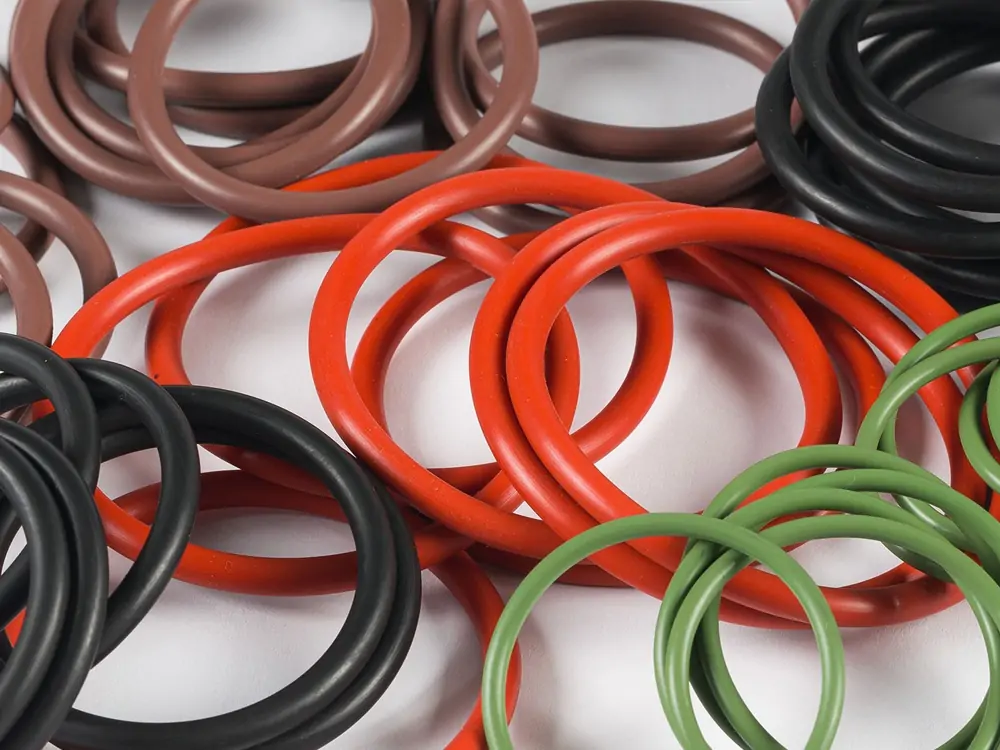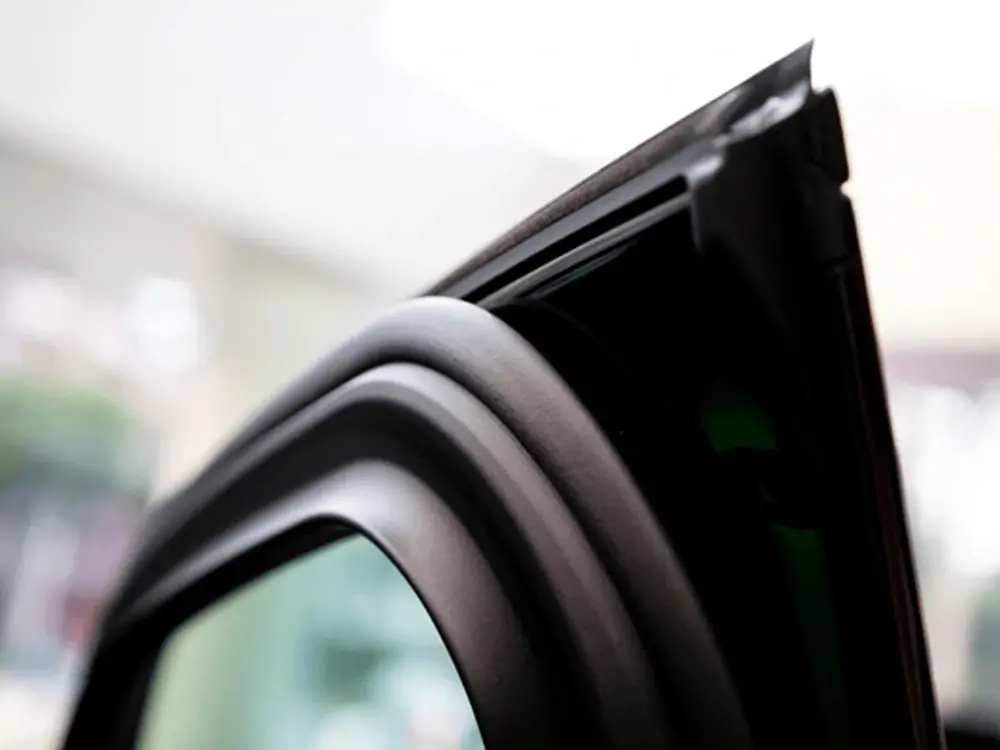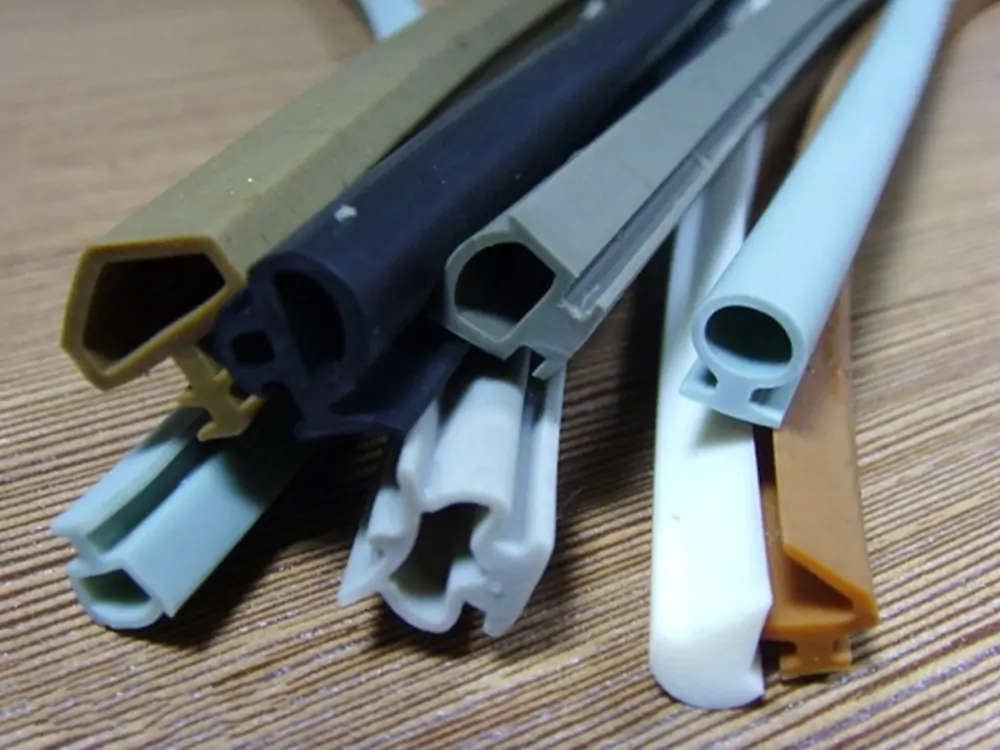Seal strips are a critical component used in various applications. It comes with a wide range of rubber seal shapes. Seal strips usually prevent the escape of substances like gases or fluids, water, air, dust, or other contaminants. It prevents them from entering closed spaces and containers. “Rubber Seal Strips Fundamentals” explains the fundamentals of seal strips. You can learn more about their importance, types, and applications in the attached URL.
One of the critical factors affecting seal strips’ performance is their shape. Different rubber seal shapes affect the compressibility, resilience, and conformity to irregular surfaces. These rubber extrusion shapes are suitable for various applications. But these shapes also affect the product’s ease of installation and durability. It also affects the resistance to environmental factors like temperature and chemical exposure.
We have created this article to explore the role of different rubber seal shapes in their performance. It explains the various factors that affect the performance of the seal strips. Later, it will highlight the general types of rubber seal shapes. After that, we will check the importance of these shapes in compressibility and noise reduction. Since the market has different rubber seal shapes, you should choose the right product for your application. In this case, we have also mentioned a few factors for selecting suitable rubber seal shapes.
What Affects The Performance of A Rubber Seal Strip?
The rubber seal strip performance depends on various factors. The following four are the primary factors that highly affect the performance of a seal strip. While choosing the suitable sealing strip, you must ensure these points to ensure adequate sealing and durability of the product. Ongoing research in seal strip design will continue to improve its performance.
Rubber Seal Shapes
The different rubber seal shapes are the most critical factor affecting the performance of the seal strips. Each form affects its compressibility, resilience, and ability to conform to irregular surfaces. Therefore, choosing the right rubber seal shape ensures effective sealing and product quality.
Seal Strip Material
The material used in the seal strip is also one of the most critical factors affecting the performance of the seal strips. The material must be compatible with the specific application. However, the seal strip material must withstand the limit of various compatibility factors. These factors include temperature, chemical exposure, and durability. The most common materials found in seal strips are rubber, silicone, neoprene, and EPDM. Each material has unique properties that affect the suitability of different applications.
Temperature And Environmental Factors
These two factors also affect the seal strip’s performance. However, extreme temperatures can cause the seal strips to be brittle or lose their elasticity. It also reduces their ability to provide an effective seal. In addition, exposure to chemicals, moisture, and UV radiation also degrades the material. They also reduce the ability to maintain a tight seal.
Adhesives Used For Seal Strip Installation
The adhesive used in seal strip installation also highly affects its performance. You should check whether your rubber seal adhesive matches the seal strip material and the product’s surface. A weak or inappropriate strip adhesive may cause the seal strip to detach and damage the surface of the seal strip.

Rubber Seal Shapes
Various rubber seal shapes are available in the market. Each of these shapes comes with unique benefits and drawbacks. These unique properties depend on the specific requirements of the application. Understanding these different extruded rubber shapes can help you choose suitable seal strips. The following four general types explain all the possible forms of seal strips. The typical materials used for these seal strips are rubber, silicone, neoprene, and EPDM.
- Flat-shape seal strips: These rubber seal shapes are the most common. They are prevalent in applications requiring sealing a flat surface against another. Typical examples are doors, windows, and enclosures. Flat-shaped seal strips can be adhesive-backed or non-adhesive-backed.
- Round shape seal strips: These rubber seal shapes are also popular as rubber cords. “Rubber Cord: A Definitive Guide” highlights all rubber cords available at the seashore rubber store. You can find different applications of these types. Rubber cords are typically used in sealing circular or curved surfaces. Rubber cords are prevalent in sealing pipes and tubes in industrial applications.
- Rectangular shape seal strips: These rubber seals are generally used to seal gaps between two flat surfaces. Square rubber extrusions are typically wider than flat seal strips. It provides a more large sealing surface. These types of seal strips are common in refrigeration and HVAC systems.
- Other rubber seal shapes: Many shapes and sizes exist except for the above three types. These shapes usually depend on specific use. However, “Seal Strip Shapes: A Complete Guide” highlights all the common rubber seal shapes you may need in your application. This comprehensive will show you the most popular forms and their unique applications.
The Importance of Seal Shape in Compressibility
Compressibility refers to a material’s compression ability under a compressive force. Regarding seal strips, compressibility is a critical factor. It determines how well a rubber seal can conform to the sealing surface. It also determines how well a seal strip can create a tight and effective seal. However, when a system compresses seal strips, it creates a barrier between two surfaces. This barrier prevents the ingress of contaminants. Above all, the level of compressibility depends on the specific application and the rubber seal shape.
In specific, the relationship between rubber seal shapes and compressibility is critical. Different extruded rubber shapes determine their ability to compress to irregular surfaces. They aim to create a tight seal in the complex structure. The difference between using flat and rectangular seal strips is the best example in this case. Flat seal strips have lower compressibility than round or rectangular rubber seals. As a result, flat surfaces are only suitable for sealing a flat surface with another flat surface.
On the other hand, round and rectangular seal strips have higher compressibility than flat seal strips. They have more materials to compress and conform to different surfaces. This characteristic makes them suitable for applications on irregular surfaces. Sealing pipes, tubes, and HVAC systems are noteworthy examples. Moreover, other rubber seal shapes are also ideal for more complex sealing applications. Each of these shapes is suitable for unique and specific uses.

Role of Seal Strip Shapes in Noise Reduction
Noise pollution is a pervasive problem that can harm health, productivity, and quality of life. One of the practical solutions to mitigate this problem is using seal strips. Different rubber seal shapes are suitable for sealing your doors, windows, and other openings. This sealing prevents the transmission of sound waves. The technology behind this noise reduction depends on specific requirements.
The role of different rubber seal shapes in noise reduction is incomparable. The most common noise-reduction seal strip shapes are round, d-shaped, p-shaped, and T-shaped seal strips. These shapes contribute to the following four technologies for varieties of building structures.
- Absorption: Different rubber seal shapes are designed for noise reduction. They come with materials with high sound absorption properties. These seal-strip materials can absorb and dissipate sound waves. As a result, it creates a peaceful environment inside the room.
- Damping: It is another technology used in noise-reducing seal strips. Damping materials contribute to sound waves’ absorption and dissipation. It effectively reduces the sound’s amplitude and prevents it from being transmitted through the seal.
- Barrier: Seal strips act as a barrier against sound. Different seal strip materials block the transmission of sound waves by reflecting them.
- Resilience: Seal strip resilience characteristics also play a role in noise reduction. A tightly conformed seal strip prevents the transmission of sound waves. It creates a complete seal between two surfaces.
Choosing The Right Extruded Rubber Shapes For Your Application
Choosing suitable seal shapes is necessary to ensure the effective sealing of your house, automotive, or building. It can be challenging as there are many factors to consider. The following are the primary factors that you should consider in this case.
- Sealing surface: The shape of the sealing surface is the most crucial factor you should consider. Depending on the application, the sealing surface may be flat, curved, or irregular.
- Application-specific requirements: The type of rubber seal shape also depends on this factor. For example, a high-vibration environment requires seal strips with good vibration-damping properties. It is necessary to maintain an effective seal over time.
- Seal strip material: Choosing the suitable seal strip material is mandatory. We have already mentioned the necessity of choosing the ideal material in the first section of this article.
- Environmental conditions: This factor is crucial when choosing ideal rubber seal shapes. Exposure to sunlight, ozone, or other environmental factors is noteworthy.

Final Thought
We have already learned that rubber seal shapes are critical to their performance. The right seal strip is necessary to reduce noise pollution or prevent the ingress of contaminants. Compressibility, resilience, and material properties determine your application’s best rubber seal shapes. We recommend that you should take time to test these factors carefully. By taking the time, you can ensure that your seal strips will provide reliable and effective performance.
You can also consult with experts. In this case, Seashore Rubber keeps one of the best customer service teams for you. You can reach them through email, WhatsApp, or WeChat. Don’t hesitate to contact their service team if you have any questions about seal strips, their types, and their shapes.
